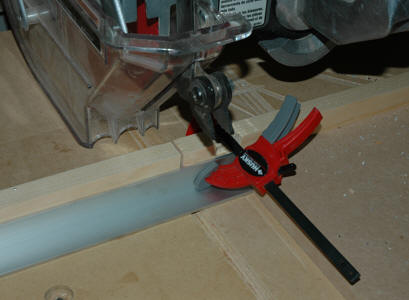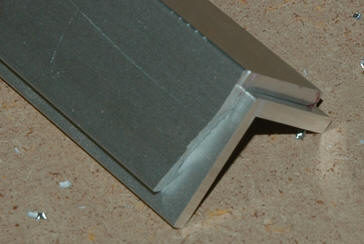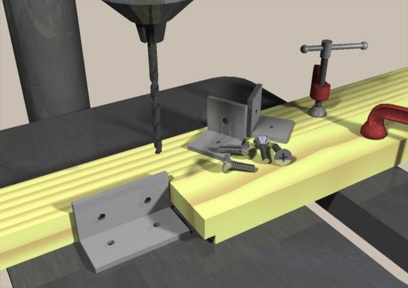With the new fence in place, put a stop-board two inches from the cutting edge of the blade For some reason, the picture to the right does not show my stop board, though I did use one. This will help make sure each piece is exactly the same length.
Lastly, use a clamp or a board to keep the end piece of the L-Bar against the fence. My first few cuts resulted in the end piece shearing (shown below). In my case, I used a clamp. I had to cut a slight notch in my fence so that the engine of the RAS saw could clear the clamp. It occurred to me later that I could have simply used a board clamped to the cutting surface, perpendicular to the fence, to hold the L-Bar in place. A quick test showed that this was also a viable solution.
To the right is a picture of two pieces of L-bar -- one cut while clamped to the fence, and one that was not clamped to the fence.


